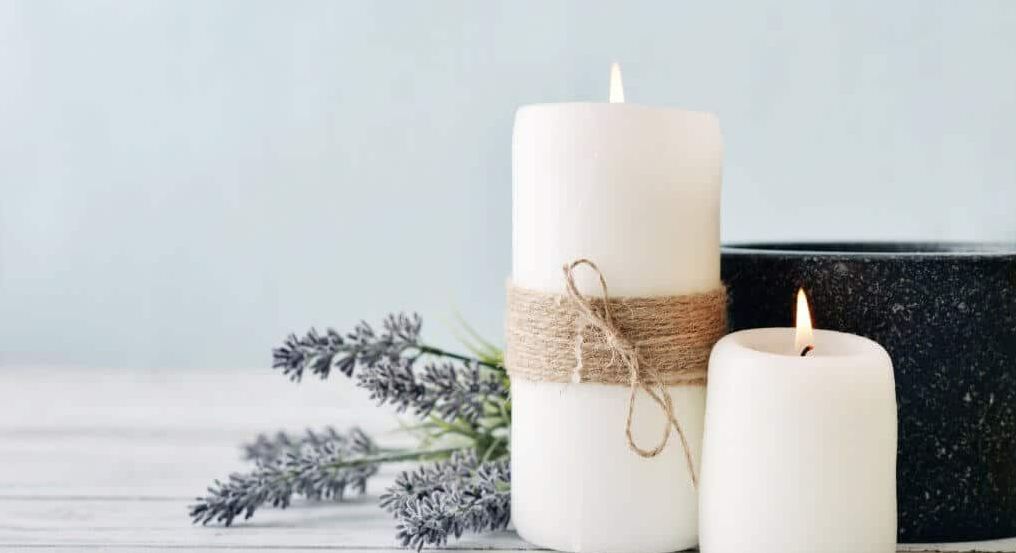Candle-making is one of the easiest and most rewarding hobbies and it can be done fairly cheaply. You can use paraffin wax, bees wax or soy wax to make your candles. Soy wax is the easiest type of wax to use.
You can melt it in the microwave. Paraffin wax and bees wax have to be melted in a double-boiler. In order to add fragrance, you can use nearly any essential oil, although some work better than others.
You’ll need to add more drops of some essential oils than others to get enough fragrance or fragrance “throw” from the candles. Exactly when the essential oils are added to the wax varies, too, depending on the oil’s flash point, and some oils require a larger wick than others.
1. Patchouli Essential Oil
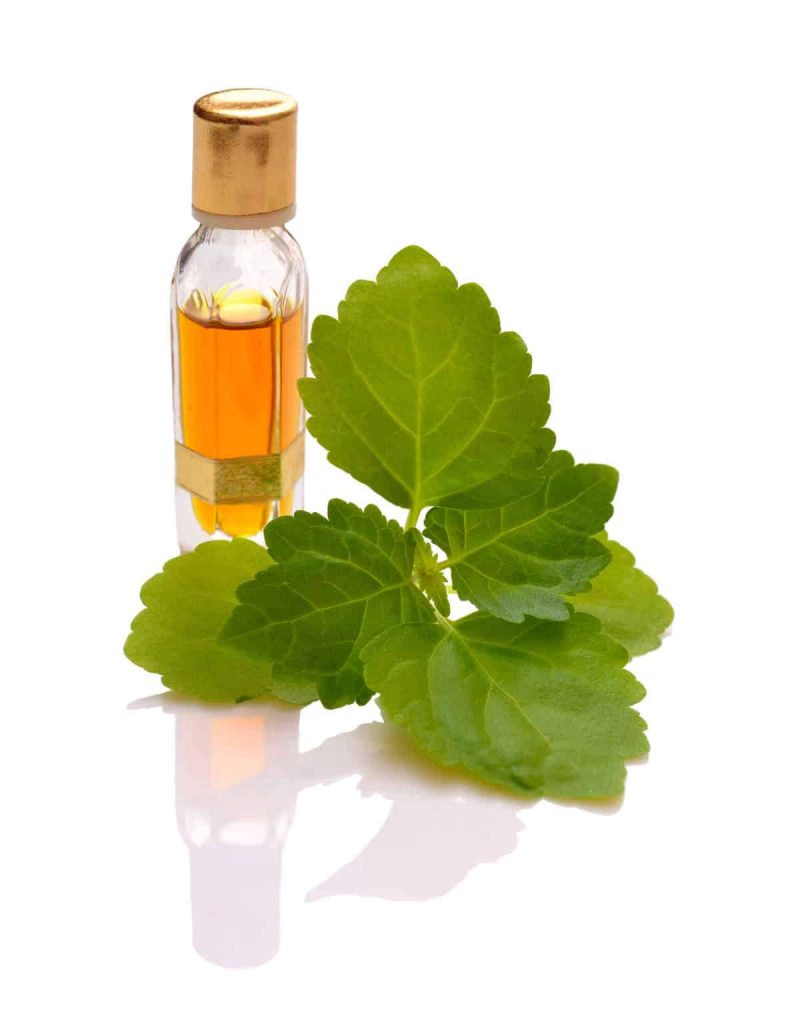
Use patchouli essential oil (Pogostemon cablin) to add an earthy, warm fragrance to your candles. It can be used on its own or blended with other oils. Try blending it with clary sage (Salvia sclarea) for an earthy, floral-herbaceous fragrance or juniperberry (Juniperus communis) for an earthy-evergreen fragrance.
Patchouli will add a fresh-spring-rain scent to any other oil you use. When patchouli is used on its own, you will need to “wick up” or use a wick that is one size larger than you would otherwise. This is because it is a heavier oil with a base fragrance note. If you don’t wick up, the oil will probably clog the wick.
Patchouli has a high flashpoint of 200 degrees Fahrenheit. Mix it in while the wax is still at a temperature of 185 degrees Fahrenheit. Clary sage has a flashpoint of 176 degrees Fahrenheit. If you want to add it to your patchouli candle, blend the clary sage with the patchouli before adding it to the hot wax.
2. Juniperberry Essential Oil
Juniperberry essential oil (Juniperus communis) smells like fresh evergreen boughs. It is wonderful for holiday candles or for an incredible evergreen-scented candle to burn at any time of the year.
Juniperberry oil has a middle fragrance note and a flashpoint of only 105 degrees Fahrenheit, which is too low to add to the hot wax on its own, even if you let it cool to 130 degrees Fahrenheit. You can raise the flashpoint, though, and make the fragrance more stable in the wax by adding a base note oil with a higher flashpoint.
Try using a blend of patchouli and juniperberry or cedarwood EO (Juniperus virginiana) and juniperberry for a wonderful pine-forest fragrance. Cedarwood has a slightly sweet-woodsy/herbaceous fragrance and a flashpoint of 200 degrees Fahrenheit. Blend the juniperberry and cedarwood or patchouli oils together first then add it when the wax cools to 130 degrees Fahrenheit.
3. Ylang Ylang Essential Oil
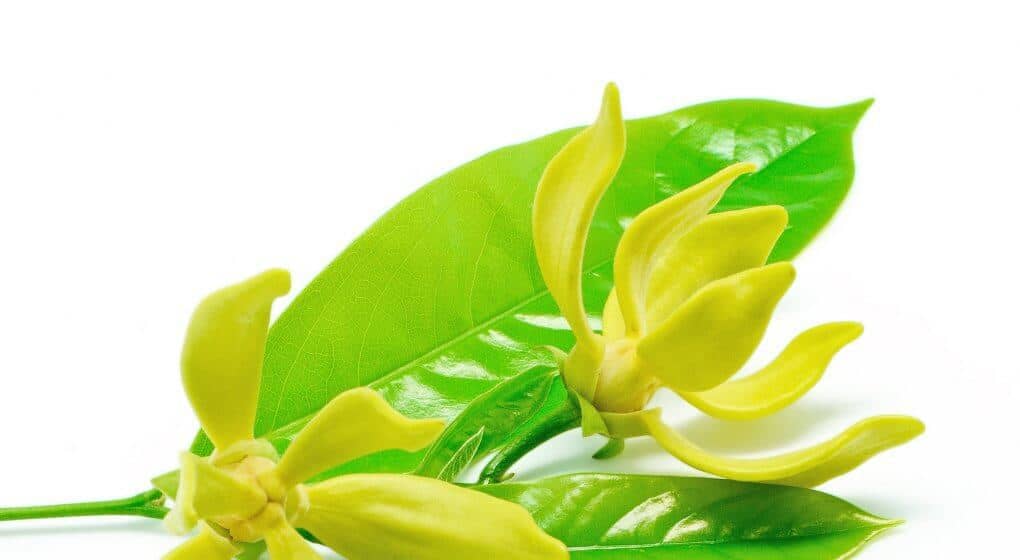
Ylang Ylang essential oil (Cananga oderata var. genuine) is a wonderful oil for floral-scented candles. It has a very intense floral fragrance that provides a resilient middle to base note. Try using only about 10 drops per ounce of wax with this oil first. If you use more than that, it may be a little overwhelming. It really is very strong, especially if you get the ylang ylang complete, which is what I recommend. It has a flashpoint of 200 degrees Fahrenheit.
*Correct wick size is based on the size of the container, type of fragrance, type of wax and type of coloring.*
4. Floral Candle Blend
Blend some bergamot essential oil (Citrus bergamia) with ylang ylang, lavender (Lavandula angustifolia) and geranium (Pelargonium x asperum) for a slightly less intense floral candle. The bergamot adds a light citrus fragrance that cuts the floral scents so they don’t become overwhelming.
Use 1 drop of ylang ylang EO, 2 drops of geranium EO, 10 drops of lavender EO and 5 drops of bergamot EO for a small candle. Bergamot has a citrus top note and a flashpoint of 110 degrees Fahrenheit. Geranium has a floral middle note and lavender has a floral-herbaceous top to middle note.
Both of them have a flashpoint of 165 degrees Fahrenheit. Blend the essential oils together and add them when the wax cools to 130 degrees Fahrenheit.
5. Floral-woodsy Candle Blend
Blend ylang ylang EO, lavender EO with sandalwood (Santalum album), cedarwood and clove bud (Eugenia caryophyllata syn. Syzygium aromaticum) essential oils for a wonderfully woodsy, floral candle fragrance. Sandalwood has an earthy-woody base-note fragrance and a flashpoint of 230 degrees Fahrenheit.
Clove bud oil has a warm, spicy-woody scent that provides a middle-base note and has a flashpoint of 200 degrees Fahrenheit. For a small candle, blend 1 drop of ylang ylang, 5 drops of lavender, 10 drops of sandalwood, 3 drops of cedarwood and 2 drops of clove oil. Cedarwood, geranium and vetiver is another great floral-woodsy/earthy blend that can be used to make scented candles.
6. Peppermint Essential Oil
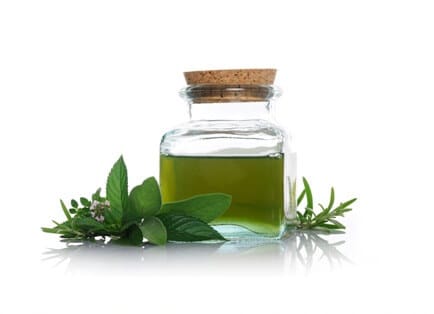
Add peppermint essential oil (Mentha piperita) to your homemade candle recipe for a fresh, minty scent. It has a camphoraceous top fragrance note and a flashpoint of 165 degrees Fahrenheit. Peppermint USA has a stronger mint-camphoraceous fragrance.
If you like a slightly sweeter peppermint fragrance, use Peppermint India. Try this minty-fresh/floral blend: 3 drops each of palmarosa (Cymbopogon martini) and peppermint essential oils and 4 drops of spearmint EO (Mentha spicata syn. M. cardiaca and M. viridis) per small candle.
Palmarosa provides a floral middle note and has a flashpoint of 200 degrees Fahrenheit. Spearmint provides a camphoraceous-herbaceous top note and has a flashpoint of 135 degrees Fahrenheit.
7. Floral Mint Candle Blend
Add peppermint and ylang ylang to your candle recipe for an intoxicating, floral yet slightly minty-fresh fragrance. Use 15 drops of peppermint and 5 to 6 drops of ylang ylang per small candle.
8. Spicy Autumn Candle Blend
For a wonderful, autumn blend of citrus and spice, make a cinnamon-orange essential oil candle. For this recipe, use 3 drops each of cinnamon and sweet orange essential oils and 4 drops of patchouli.
It smells spicy-fresh. Cinnamon essential oil (Cinnamomum zeylanicum or C. verum) provides a spicy-woody middle note and has a flashpoint of 190 degrees Fahrenheit. Sweet orange essential oil (Citrus sinensis syn. C. aurantium var. dulcis or var. sinensis) provides a citrus top note and has a flashpoint of 115 degrees Fahrenheit.
9. Relaxing, Aphrodisiac Candle Blend
Use this aphrodisiac essential oil blend to add a sexy fragrance to candles for a romantic night with that special someone. Mix together 1 drop each of vetiver, ylang ylang and cinnamon oils with 10 drops of rosewood essential oil. Vetiver EO (Vetiveria zizanioides syn.
Andropogon muricatus) has a spicy-woodsy-herbaceous scent that provides a base fragrance note. It has a flashpoint of 200 degrees Fahrenheit. Rosewood EO (Aniba rosaeodora) has a floral-woodsy fragrance and provides a base to middle note. It has a flashpoint of 184 degrees Fahrenheit.
*General rule of thumb – use 25 to 30 drops total of essential oils per ounce of wax.*
10. Jasmine Essential Oil
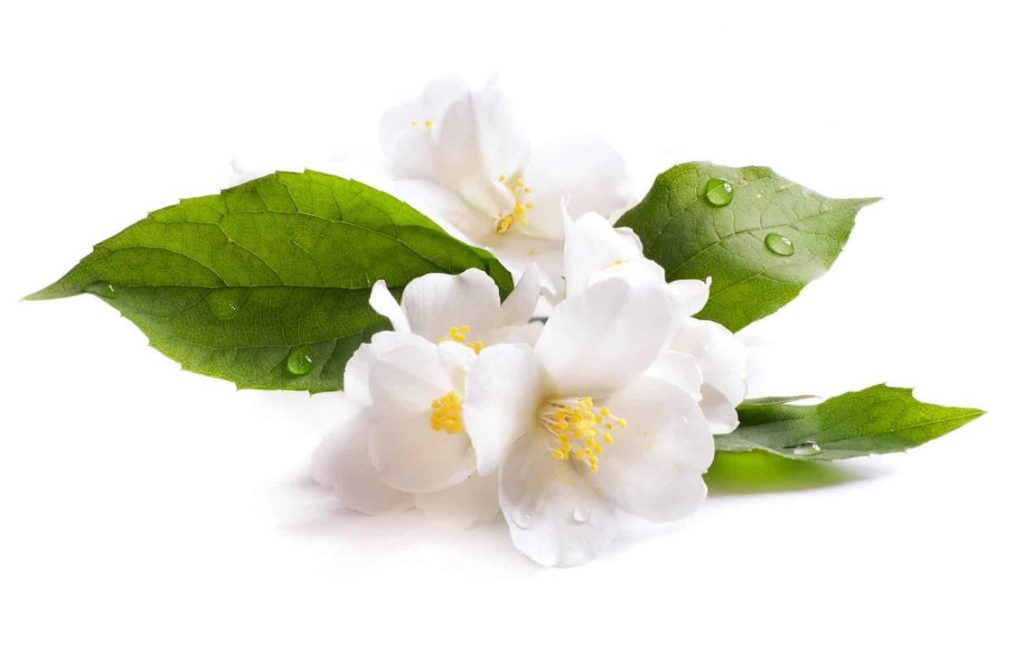
Jasmine essential oil (Jasminum grandiflora syn. J. officinale) is another great floral oil to use in a scented candle recipe. It can be used in place of ylang ylang to make aphrodisiac candles. Be sure to buy jasmine absolute for making candles. Jasmine has a floral, base-middle fragrance note and a flashpoint of 185 degrees Fahrenheit.
It can be mixed with bergamot essential oil or orange oil and cedarwood for a wonderful, fresh-floral-woodsy smelling candle. Blend together 10 drops of cedarwood, 5 drops of bergamot and 1 to 2 drops of jasmine. You can also blend it with patchouli for a fresh earthy-floral fragrance.
11. Lavender Essential Oil
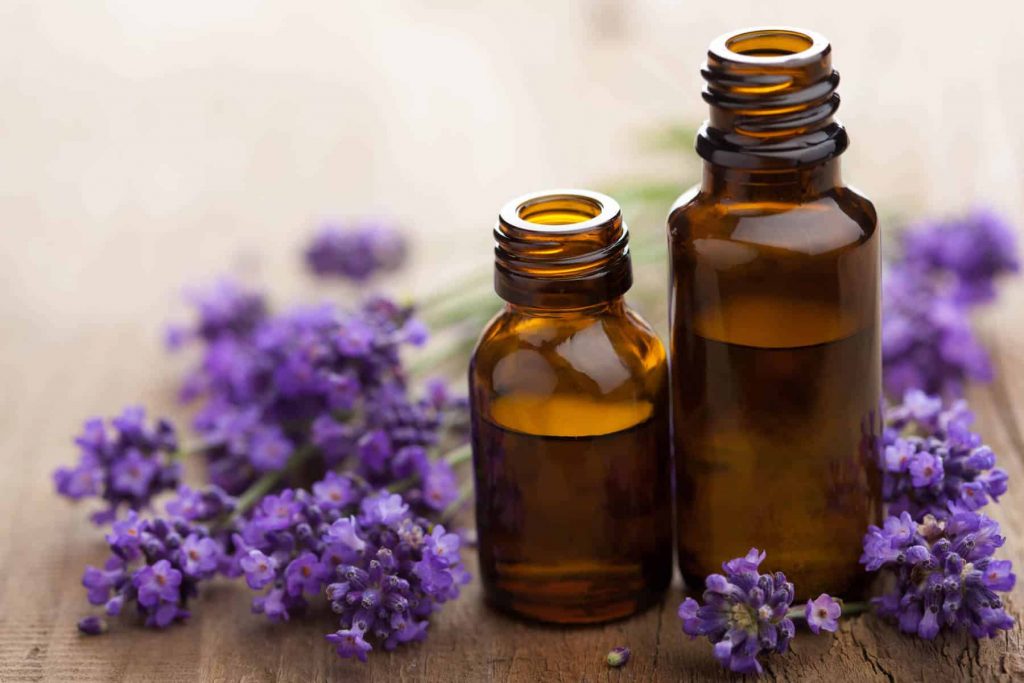
Lavender essential oil (Lavandula angustifolia syn. L. officianalis) is excellent for candles. Who doesn’t love a lavender-scented candle? Lavender EO has an herbaceous-floral, middle to top fragrance note and a flashpoint of 165 degrees Fahrenheit.
Blend it with clary sage EO for a more herbaceous fragrance or patchouli for a candle that smells like a lavender meadow right after a spring rain. You can also blend lavender with citrus oils for an interesting citrusy-floral fragrance. If you use just the lavender oil in your candle, let the candlewax cool to 165 degrees Fahrenheit before adding the lavender.
12. Decongestant Candle Blend
Use peppermint and eucalyptus essential oils to make a wonderful decongestant candle for when you or a loved one are suffering from congestion. Eucalyptus oil (Eucalyptus globulus) has a camphoraceous yet earthy-woody fragrance and is a middle to top fragrance note. The flashpoint for eucalyptus oil is 120 degrees Fahrenheit.
Blend together 15 drops of peppermint and 15 drops of eucalyptus for a small candle. Because the eucalyptus oil has a flashpoint below 130, you’ll want to blend the peppermint and eucalyptus oils together first to raise the flashpoint, then add them when the wax cools to 130 degrees.
13. Palmarosa Essential Oil
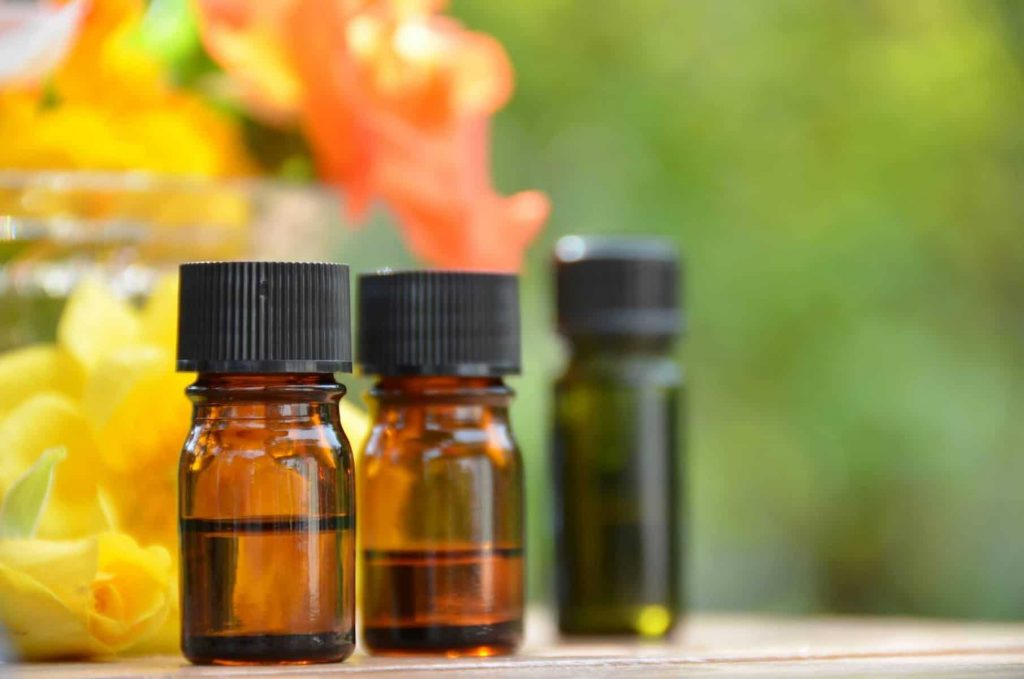
Palmarosa essential oil (Cymbopogon martinii) is a floral oil that actually smells a bit like roses. If you want to make rose-scented candles but don’t want to spend the money for true rose oil, try using palmarosa. It provides an herbaceous-floral middle fragrance note and has a flashpoint of 200 degrees Fahrenheit.
Palmarosa has a long-lasting fragrance, making it especially good for adding scent to candles. You can use just 25 drops of palmarosa per ounce of wax or blend it with floral, citrus or wood oils. It blends well with other florals like geranium, wood oils like cedarwood and sandalwood as well as citrus oils like grapefruit.
A palmarosa and lemongrass (Cymbopogon citratus or C. flexuosus) scented candle smells wonderful, as does palmarosa and lemon oil (Citrus limon). Lemongrass has a flashpoint of 160 degrees Fahrenheit and lemon essential oil has a flashpoint of 118 degrees Fahrenheit.
14. Myrrh Essential Oil
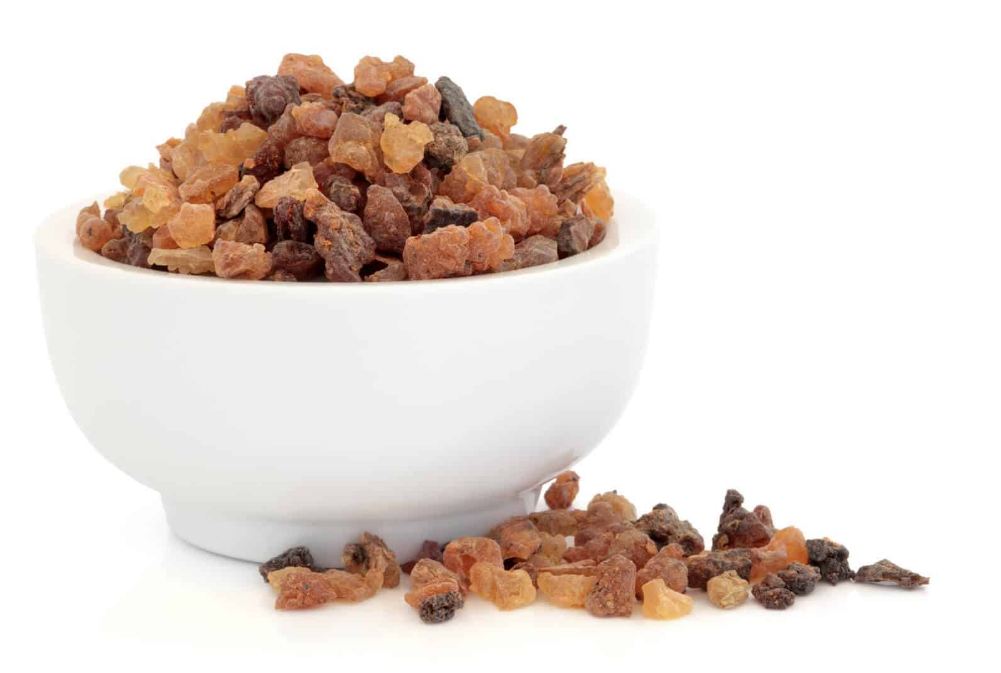
Myrrh essential oil (Commiphora myrrha) has a rich, resinous, balsamic fragrance that is great on its own or in blends with other oils. It has a base fragrance note and a flash point of 200 degrees.
Blend it with juniperberry oil or cypress oil (Cupressus sempervirens) oil for a fresh, evergreen-woodsy-scented candle. Cypress has an herbaceous-woody, middle fragrance note and a flashpoint of 148 degrees Fahrenheit. Myrrh goes well with sandalwood and peppermint, too.
15. Rejuvenating Candle Bland
For a refreshing scented candle that will put a little pep back in your step after a long day, try blending grapefruit, cypress and geranium oils and using them in your candle recipe. Grapefruit essential oil (Citrus paradisi) provides a citrus top note fragrance and has a flashpoint of 115 degrees Fahrenheit.
Cypress oil has a flashpoint of 148 degrees Fahrenheit and geranium has a flashpoint of 165 degrees Fahrenheit. Combine 12 drops of cypress oil, 8 drops of grapefruit oil and 5 drops of geranium oil per small candle and mix the oil blend in when the wax has cooled to about 130 degrees Fahrenheit.
16. Relaxing Bedtime Candle Blend
Use lavender, orange and ylang ylang essential oil to make a scented candle that will help you relax at the end of the day so you can fall asleep more quickly. Add 12 drops of lavender, 8 drops of ylang ylang and 5 drops of orange oil to your candle wax.
17. Holiday Candle Blend
Mix together 5 drops of spruce essential oil (Picea mariana), 8 drops of orange EO and 12 drops of cinnamon EO and add it to your candlewax for a spicy, evergreen, holiday candle. We have created other holiday blends as well for you here.
The flashpoint for spruce EO is only 108 degrees Fahrenheit but, because cinnamon oil has a flashpoint of 190 degrees Fahrenheit and sweet orange EO has a flashpoint of 115 degrees Fahrenheit, you can still make a candle with it.
Just be sure to blend your essential oils together first then add the blend to the candlewax after it has cooled down to 130 degrees Fahrenheit.
Was this list helpful to you? Scented candles are so enjoyable and easy to make. If you buy the soy wax flakes, all you have to do is put them in a glass measuring cup with a spout and melt them in the microwave.
The hardest part is making sure the wax gets hot enough and cools down to the right temperature before you add the essential oils. If you use beeswax or paraffin wax you have to use a double boiler, or one pan placed in a larger pan with water in it, to heat the wax. The soy wax is so much easier.
Please leave a comment to let me know if this list is helpful and share your own experiences with using essential oils to make scented candles. Let me know if you’ve found a certain oil or blend that works well and smells really good. Be sure to share, too, so that others can learn about using essential oils to make homemade candles.
References:
1. Aromatherapy Recipes: Essential Oil Blends for Making Aromatherapy Oil Candles
http://www.easy-aromatherapy-recipes.com/soy-candle-recipe.html
2. Fragrance and Flavors: Essential Oil Chart
http://www.wholesalesuppliesplus.com/pdfs/essentialoilchart.pdf
3. Chemical Book: 8006-87-9 (Sandalwood oil) Product Description
http://www.chemicalbook.com/ChemicalProductProperty_US_CB0446934.aspx
4. Chemical Book: Jasmin Absolute Morocco
http://www.chemicalbook.com/ProductChemicalPropertiesCB6122122_EN.htm

